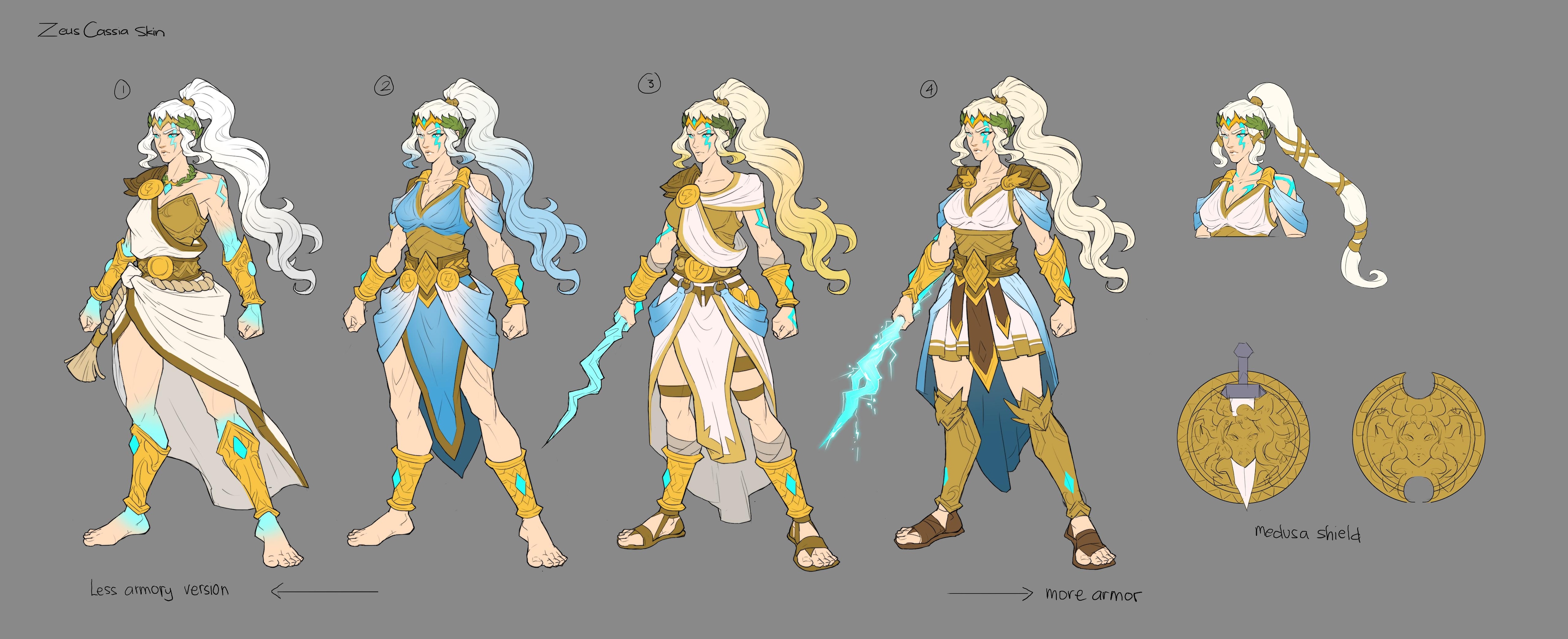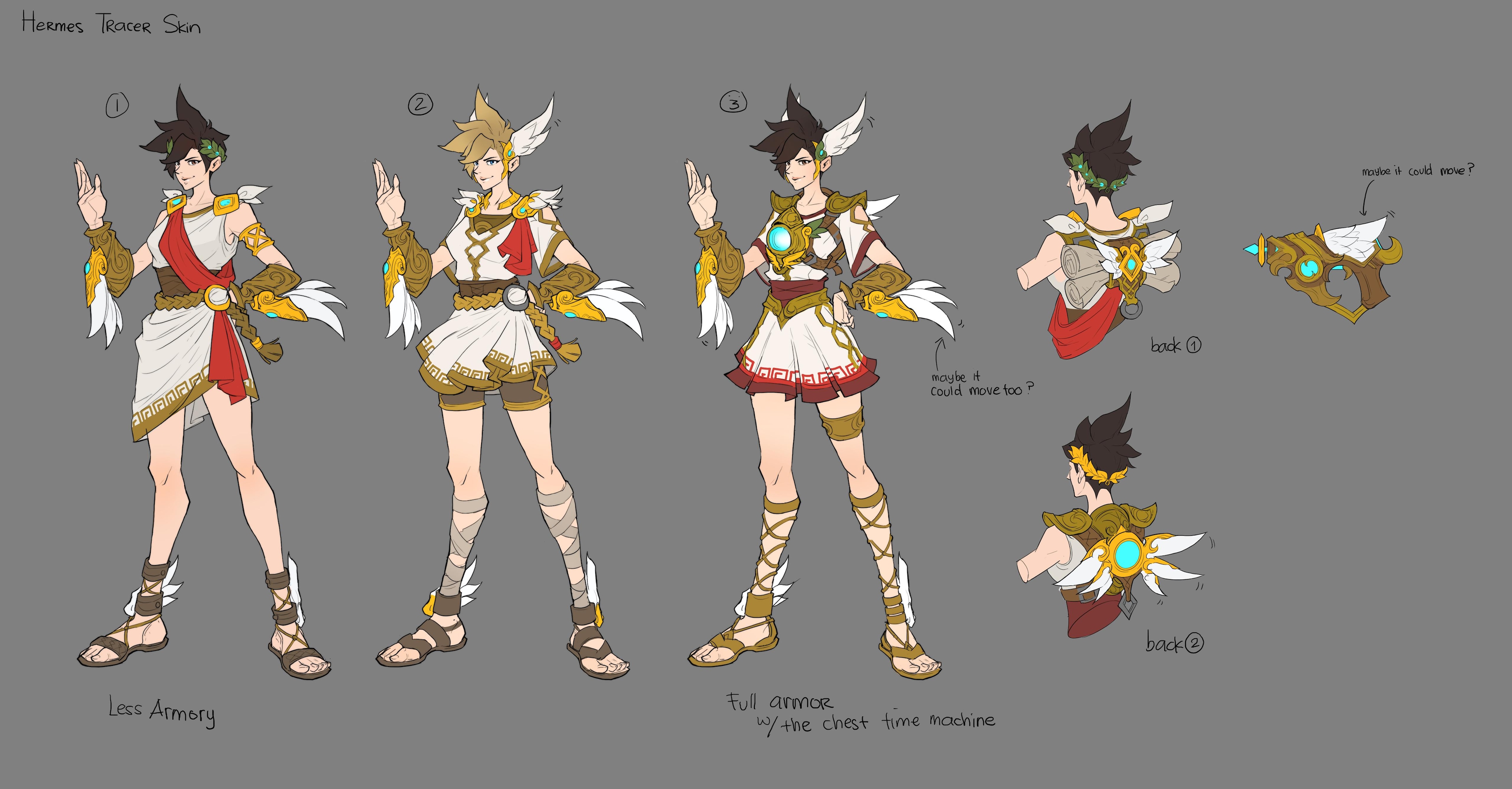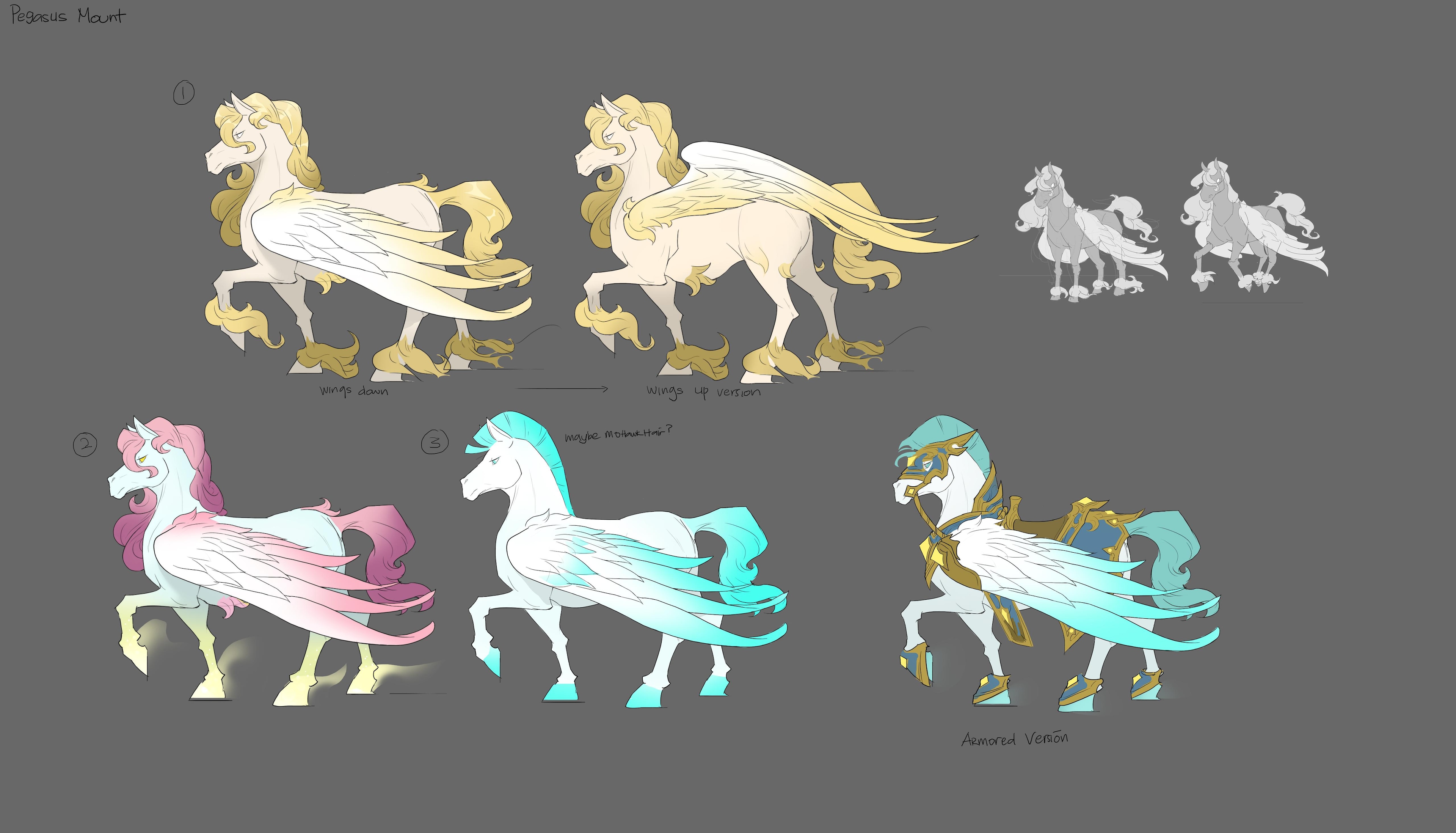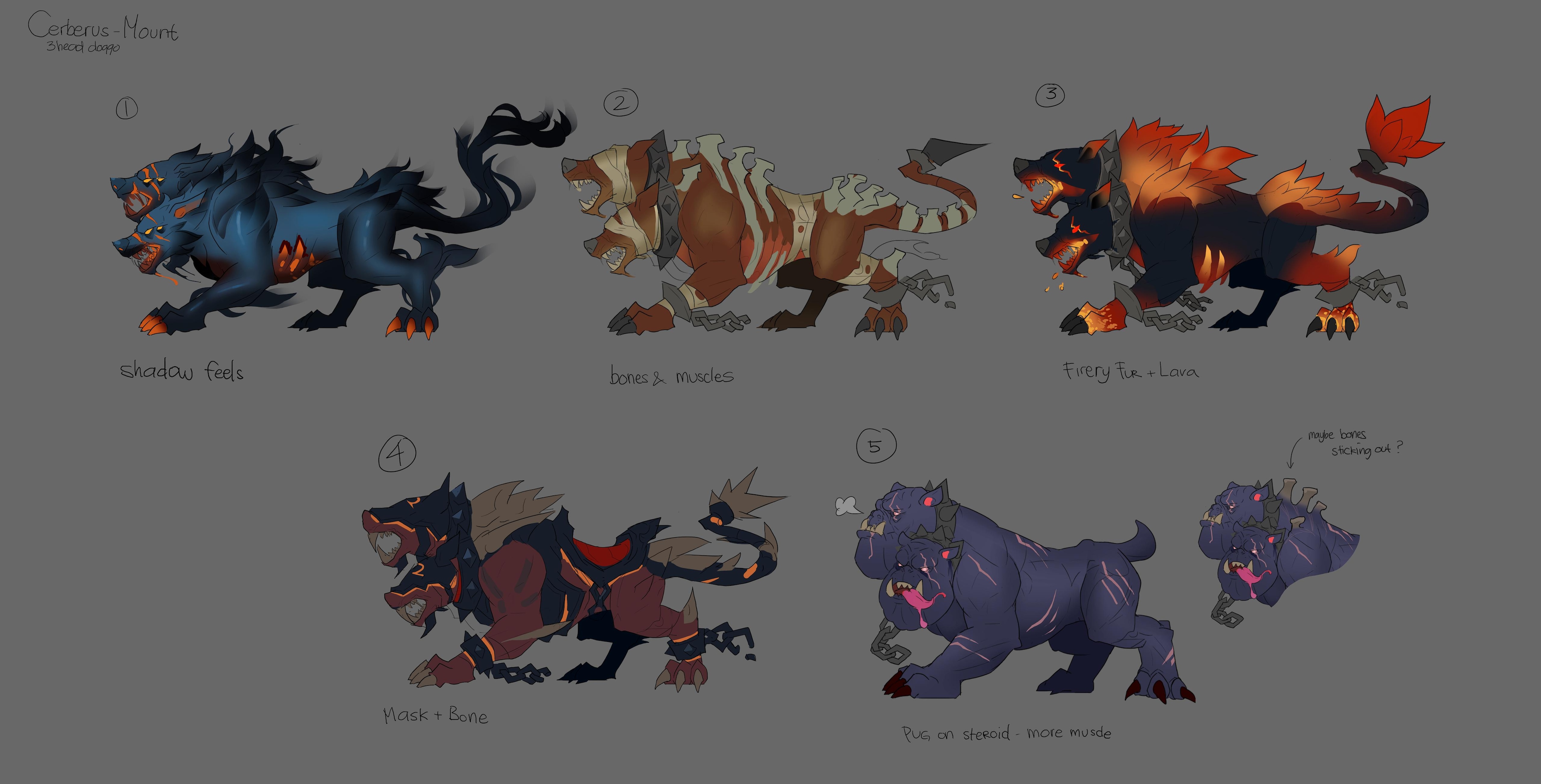Heroes artists discuss their process… and manage to leak this year’s Greek Gods event
“Brew is awesome. Brew is amazing,” says Trevor Jacobs.
“I’m OK,” says Andrew Kinabrew, sitting back in his chair with a slight smile and arms folded.
“He’s amazingly OK,” says Jacobs.
Interviewing Jacobs and Kinabrew—Heroes of the Storm Assistant Art Director and Senior Artist, respectively—is like interrogating two giddy suspects who can’t get their story straight, except they’re riffing off of their own jigsaw-fitted dynamic so well that you almost don’t care what you pulled them in for anyway. Their crime, in this case? Creating hundreds of accessories for in-game murder. We sat down with the artists to find out what exactly has been going on behind the scenes of their criminally creative skin pack concoctions.
First: Some background on our suspects. The awesome, amazingly OK Kinabrew started at Blizzard eight years ago on the project that would soon become Overwatch. After a year he switched onto Heroes of the Storm and has been working with Jacobs ever since.
Jacobs, a Blizzard veteran of 24 years, worked on a range of projects, from Warcraft II and III to the original StarCraft, before coming to Heroes, where he says he’s found his passion project.
“Heroes gets to do so much fun stuff,” Jacobs says. “It’s like being a kid with this huge toy box. You get to play with everything. Selfishly, I feel like any dreams we have, we get to do.”
Well, a kid with a toy box doesn’t sound so dastardly after all.
The Toys in the Toy Box
So where exactly do these dreams start, and what’s the process of bringing them to completion in-game? As it turns out, skin concepts come from a diverse number of places. Some skins are drawn from the artists’ life experiences, or their fond memories of Blizzard IPs and pop culture during their childhood, inspiration from the community, jammed out during the annual team-wide Hackathon, and probably more. (It would be foolish to assume kids want to share all their toys in the box with you.) The nesting ground for these ideas is the art team’s backlog of over 200 skin concepts, where skins develop their own stories and mythos to surround them over the course of years. Making it off the backlog is no easy task: it means the skin probably combines several of the influences listed above, and it’s garnered enough admiration from the rest of the team to have accomplices to allow for its escape into the Nexus.
Nexomania's El Chamuco Diablo skin, which remained on the backlog for two years, was one such example, and we shudder to think of the sheer volume of player lives it’s claimed since its release.
Kinabrew, who created the original concept for the Legendary Mariachi Reaper skin in Overwatch, came up with a Luchador Diablo concept shortly after joining the Heroes team. He believed the skin could be part of a greater event and championed it internally for years, working to convince others, too. Finally, the Luchador Diablo domino elbow-dropped: others started to embrace and pursue the idea. A design manager used his previous experience writing for a wrestling game to help brainstorm wrestling moves. Another artist who grew up watching lucha libres with his family made concepts for other Nexomania skins.
“The animators came up with really cool poses. And then our community team made cool luchador masks for us,” says Jacobs. “Even getting an announcer, which is usually a pain because you have to do it in every language—people we didn’t expect to become advocates were championing [the event] with us.”
The event inspired everyone to add a little bit of themselves to its creation. Kinabrew, who is originally from New Mexico, adds that it was his opportunity to represent his home and family in one of his favorite games.
“[In New Mexico] we have a lot of Latino influence. My wife is Mexican-American,” he says. “It just reminds me of home."
My Big Fat Greek Leak
Nexomania wasn’t the only event that arose from the toy box like a plushy brought to life by a precocious child’s unconditional love. Let’s not forget why we pulled these two villainously artistic minds into interrogation in the first place—we have a lead on a new criminal plot in the works.
“I’m trying to think what we can leak. The Greek God stuff is pretty fun, right?” Jacobs says, looking sidelong at Kinabrew.
Kinabrew chuckles nervously, eyebrows threatening to leap off his face.
“Greek Gods was another idea we’d been mulling over for years,” Jacobs says.
The Myth skin pack, a subevent coming later in the year, also came together thanks to a diverse set of influences and several years on the backlog. A concept skin for Uther, called “Uthor” after the Nordic God Thor, was part of the inspiration. But once the team translated the concept to Cassia with a lightning bolt for a weapon, the full event was finally born.
“We were thinking, wouldn’t it be cool to see Cassia with a Zeus skin? Because her kit is all lightning. And then it started hitting like ‘what if we added this character? Or that character?’” Jacobs says, punctuating each sentence with a snap of his fingers, reminiscent of a lightning bolt striking earth.

The bolt of inspiration started from Thunder Goddess Cassia electrified the team to create a Hermes-inspired Tracer skin, a Cerberus mount, and a Pegasus mount—all of which the team can’t wait to unleash onto the live server.



The skins are in the pipeline now; Kinabrew recently finished his “consistency pass,” to make sure the whole pack is visually consistent. Soon, he and Jacobs will be on to the next project. On the Heroes art team, there’s always another dream to explore.
Try out a new look on your favorite Hero today. Stay on the lookout for the Myth subevent and more on the Heroes of the Storm official website.